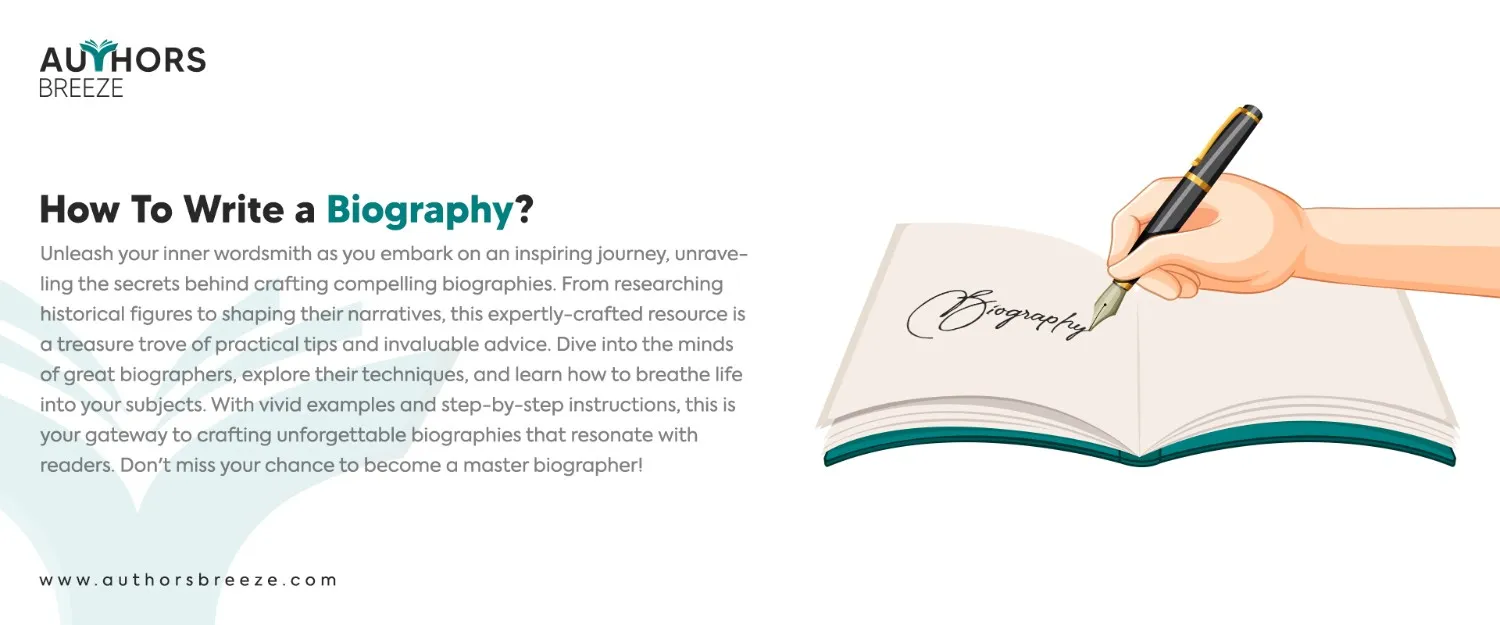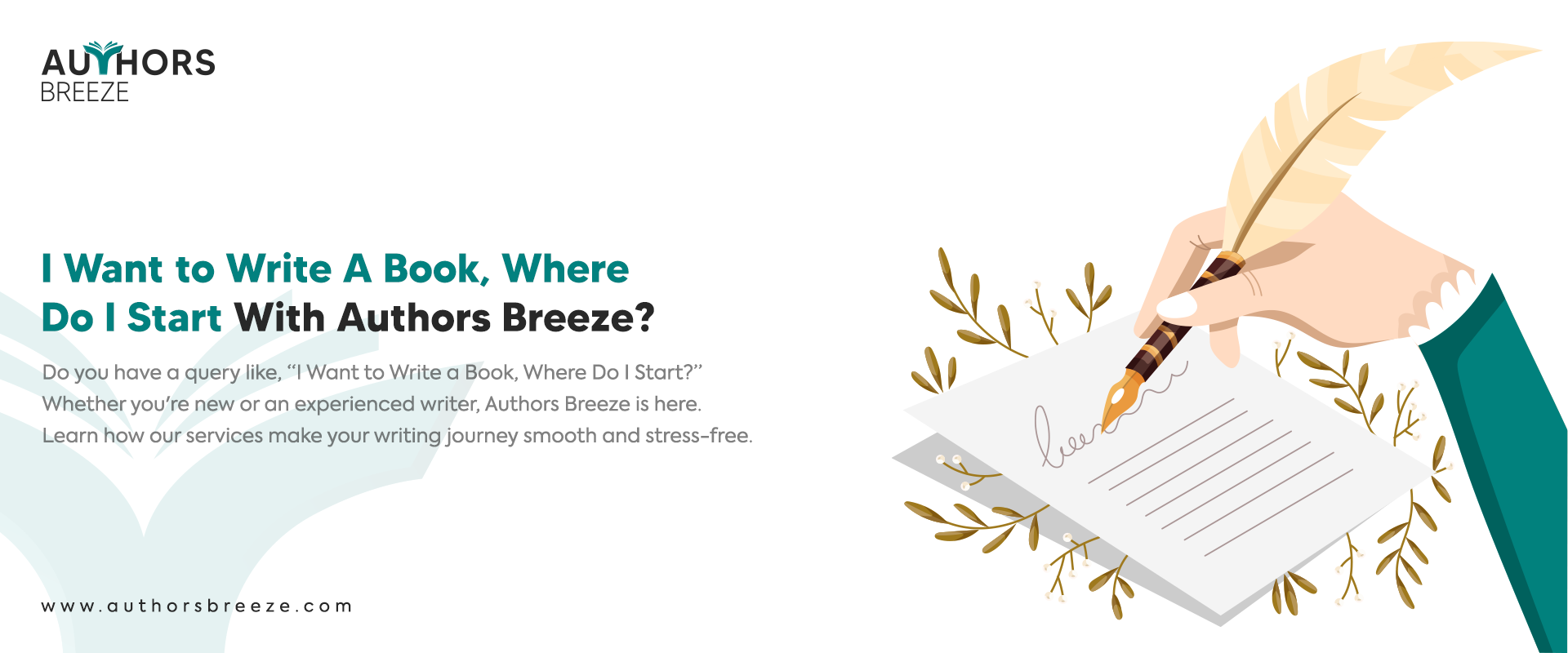Have you ever wanted to write a biography? Or perhaps you have a story in mind that you want to bring to life through the power of words?
Writing a biography is an art. It allows us to preserve and celebrate the lives of remarkable people.
Whether it is a historical figure, a public figure, or even a family member, a well-crafted biography offers a glimpse into their accomplishments, struggles, and the legacies they leave behind. Today, we will discuss how to write a biography. It will help you bring fascinating stories to life.
Whether you plan to write and publish your book on your own or you acquire ghostwriting services, this guide will equip you with the knowledge to write a biography.
Let’s embark on an exciting journey to uncover the secrets of how to write a biography. From what is a biography to discovering effective writing techniques, we will provide you with the necessary tools and ideas for biography. So, let’s dive in and find your inner biography writer!
What is a Biography?
Before we delve into the world of biography writing, let’s first clarify what is a biography actually. In simple terms, a biography is a written account of a person’s real life. It captures the essence of their experiences, deeds, and challenges and presents them in a coherent and engaging manner. A well-crafted biography informs readers about the life of the subject. Also, it provides insights into their personality, goals, and impact on society.
Step 1. Biography Setup: The Base of the Success
To create a captivating biography, you should lay a solid foundation. Here are some essential steps to consider for biography setup:
Choose a Subject
Select a person whose life story resonates with you or captures your interest. It could be a historical figure, a current icon, or even someone you know. You can also consider people who have made major contributions or have charming life stories.
Ask Permission from the Subject
Before you start your research, ask the subject if you can write about them. If you get their consent, it will be easy for you to write about them as they can provide more details about them. However, you don’t need their permission if your subject is not alive.
Conduct Thorough Research
After you select the person whose life you want to convert into words, research their lives and assess their relevance to the intended audience. Collect info and data about your subject as much as possible. Read books, articles, and interviews about them. In addition, consult reliable sources and explore multiple perspectives to gain insights into their life.
Solid research is vital for an accurate and credible biography. Gather both primary and secondary sources, including:
- Interviews
- Personal accounts
- Archival materials
Fact-check and verify all the resources. It will ensure the authenticity of your work. If you invest time in your research, you can paint a vivid and exact portrait of your subject.
Outline Your Biography
A well-structured outline acts as a roadmap for your writing. Therefore, organize your biography by creating an outline or storyboard. For example, divide the biography into sections such as:
- Early life
- Major milestones
- Challenges faced
- Achievements
- Legacy
It will help you maintain a coherent flow and keeps the reader engaged.
You can also divide the content into chapters or sections that ensure a logical flow. It will help readers navigate through the subject’s life seamlessly. As a result, it will enhance their reading experience. Well-structured content creates a sense of coherence and clarity.
Structure the Biography
If you want to present the life of your subject logically, develop the structure of your biography.
- First, decide whether to adopt a chronological or thematic approach.
- Next, develop a narrative arc that engages readers and keeps them invested in the story.
- Finally, highlight key events, achievements, and challenges. It will provide a complete view of your subject’s life.
Step 2. Writing a Biography: The Art of Storytelling
Now that you have a solid base, it is time to bring the story of your subject to life. Here is how you can write a biography and enhance your biography writing skills:
Writing Style and Tone
Choose the appropriate writing style and tone. It is crucial and helps you capture the essence of your subject and engage readers. Also, consider the target audience and tailor your language accordingly.
Balance objective and subjective writing. It allows you to present facts while you infuse the story with personal insights and emotions. Also, you can utilize vivid descriptions and engaging language to bring the story to life.
Craft the Opening
The opening of your biography sets the stage for what’s to come. Spark curiosity and engage your readers from the start. Establish the significance or relevance of your subject. It intrigues readers to delve deeper into the life story of your subject. Also, a captivating opening will make your biography hard to put down.
Begin your biography with a strong intro that hooks the attention of the readers. For example, you can start with:
- An intriguing anecdote
- A powerful quote
- A significant event from the life of your subject
Develop the Body
The body of your biography is where the story unfolds.
- Present the early life of the subject.
- Provide context for their later achievements.
- Describe their major contributions, accomplishments, and personal growth throughout their journey.
- Delve into their challenges
- Highlight their resilience and determination.
Highlight Key Moments and Influences
Identify and emphasize pivotal events or turning points that shaped the life of your subject. Explore the influences of key people, mentors, or cultural and historical factors. If you showcase the influences and circumstances that molded your subject, you can create a richer and more nuanced portrait.
Address Controversies and Criticisms
No biography is complete without controversies or criticisms surrounding the subject. Acknowledge differing viewpoints and present a fair assessment of criticisms. Offer supporting evidence or counterarguments to provide a balanced perspective. It allows readers to form their own opinions while they understand the complexities surrounding your subject.
Showcase the Subject’s Journey
Take your readers on a compelling narrative journey by illustrating the key moments and turning points in the subject’s life. Highlight their struggles, triumphs, and the lessons they learned along the way.
Include Personal Anecdotes and Insights
If you add personal anecdotes and insights, it will add depth to your biography. In addition, it offers readers a glimpse into the thoughts, emotions, and experiences of the subject. As a result, it fosters a link between the reader and the protagonist.
Conclude the Biography
Summarize the life of the subject and the impact they have had on the world in the conclusion. Reflect on their legacy and contributions. It will leave readers with a lasting impression. Craft a thought-provoking ending that invites readers to contemplate the subject’s significance and the lessons their life story imparts.
Step 3. Editing and Polishing
Before finalizing your biography, ensure you edit and polish it thoroughly. Review the content for the following:
- Clarity
- Coherence
- Grammar
Then, make revisions and edits to refine your work until it shines with perfection.
Seek Feedback
You can ask beta readers, editors, or even your friends to read your work and review them. It will help you point out mistakes that you miss.
If you are going for a digital version of your work, you can leave it to the company from which you are eBook writing services.
Format it Properly
You should also format your work in a proper way. The goal of book formatting is to make your biography visually appealing and readable. It enhances the overall impact and facilitates the absorption of info.
Step 4. Market Your Biography: Unleash Your Story’s Potential
Once you’ve completed writing a biography, market it effectively so that it reaches its full potential. Here are some strategies you can utilize to promote your biography and ensure its success:
Craft a Compelling Book Cover
The saying “Don’t judge a book by its cover” doesn’t hold true in the competitive world of publishing. Therefore, you should design an eye-catching and professional book cover. It should reflect the essence of your subject’s life and captures the attention of potential readers. A visually appealing cover will play the role of a powerful marketing tool for you.
Leverage Marketing Services
You can acquire book marketing services if you don’t know how to advertise your biography. They will help you promote your book effectively. As a result, it will reach the target audience.
Utilize Your Author’s Website
You should have an author website to showcase your work. If you don’t have an author website, then go for author website design services. They can help you create a website where you can not only display your work but also market yourself as an author.
Ideas for Biography: Fuel Creativity
Stuck on finding unique content or angle for your biography? Here are some creative ideas to help you:
Focus on a Specific Period
Instead of covering the entire life of the subject, zoom in on a specific era or phase that shaped their identity or marked a major transition. It allows you to delve deeper into the experiences of the subject during that time.
Explore Untold Stories
Unearth lesser-known aspects of the life of your subject that have the potential to surprise and captivate readers. It could involve highlighting the following:
- Their struggles
- Contributions to society
- Uncovering long-held secrets
Biography vs Autobiography: The Distinction
You should know the difference between biography vs autobiography.
A biography is a written account of someone’s life by another person. On the other hand, an autobiography is a self-written account of one’s own life.
Each form has its unique perks and perspectives. For example, you rely on research and multiple sources when writing a biography. In contrast, an autobiography allows the subject to narrate their story in their own words.
Interested in writing an autobiography of your own? Read our blog: How to Write an Autobiography.
FAQs
What are the 5 Elements of a Biography?
The five basic elements of a biography are:
- Personal details of the subject.
- Personal life.
- Important life events.
- Areas of achievement.
- Significance in their field and impact on the world.
How do you Write a Biography about Yourself?
You can write a biography about yourself by including Info about your:
- Education
- Work experience
- Hobbies
- Interests
- Other personal details.
You can also include your goals and aspirations, as well as your values and beliefs.
What Things Should a Biography Include?
A fascinating biography conveys the realities of the subject's real life. It should include what the subject did in his life and how they made an impact on this world.
Conclusion
You’ve embarked on the journey of how to become a skilled biography writer. Writing a biography is a rewarding endeavor that allows us to preserve and share the extraordinary stories of remarkable individuals. You can create a unique and captivating biography by following the steps outlined in this guide.
So, start your journey today and uncover the amazing stories that deserve to be told and remembered for generations to come. However, if you need any kind of help relating to your writing journey, you can ask Authors Breeze. We are a top self-publishing company in the industry that plays a vital role in your success.






